The Datsun 240-Z In The Styling Studio
Concept To Reality 1965 to 1968


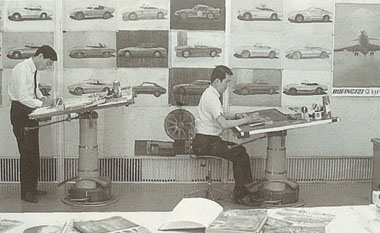
"Design Project Z" so named was assigned by Mr. Hara to: Development Section 1 (Passenger Cars), Styling Studio No. 4 (Sports Car Styling). Styling Studio No. 4 was headed by Mr. Yoshihiko Matsuo, Chief Designer.
Some Quotes From Mr. Matsuo as he writes in 1999;
1. "About 35 years ago, Japan was just starting to make inroads into the American market, but at the time our products were not highly regarded, they sold because they were cheap. "
2. "When Mr Katayama came back from America and visited my department. the words he said made me determined to follow my dream. He stated that we could go on making cheap economy cars forever, but by doing so, we would never be able to move forward in export markets. Nissan, and Japan as a whole, needed to build something stunning, something original that would make foreign manufacturers sit up and take notice of us. "
3. "I felt the only way to make any progress with the project was to make a clay model to show Katayama-san, gain his support, and ask him. as the President of Nissan USA, to push for the model's development. " .
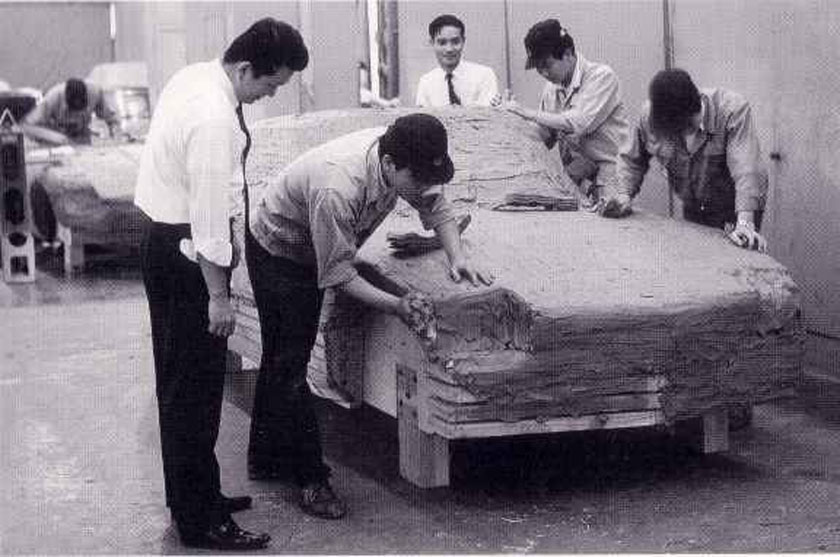
Above: 1965: Building A Very Early Clay Model. Note the relatively small size based on the previous roadster chassis.
Mr. Matsuo tells us... "this period saw the introduction of full-sized clay models being employed in the styling room. along with the use of pastels and marker pens for sketches. The whole process of automotive design was in the midst of a radical transformation at the Nissan works."

Mr. Matsuo tells us that when he was assigned to head up Nissan's Sports Car Styling Studio he had no specific direction from his management related to the designs he was to develop. So his initial starting point was to develop a small roadster based around the 2.0 liter U20 engine {as used in the Datsun 2000 roadsters}. While based on the previous roadsters wheel base, he had a far more modern design in mind. What he calls Plan A, however upon review his management wanted to take a more conservative approach based on the lines of the previously developed Silvia Coupe - Matsuo refers to this as Plan B.
Mr. Matsuo tells us that during 1965 several Styling Concepts were developed, but he kept coming back to his original Plan A, while his management encouraged him to follow a more conservative path with Plan B. Keep in mind that at this point, both Plan A and B were the size of the 1600/2000 roadsters and had 4 cylinder engines.

Above: 1965 Concept Sketch by Mr. Matsuo Of A More Modern 4 Cylinder Roadster
In order to keep this summary brief - we will at first follow only Mr. Matsuo's Plan A development - as that is what was evolved over time to become the Z Car we all know today. We can view some of the alternative styling concepts done between 1965 and 1967 at the end of this brief.
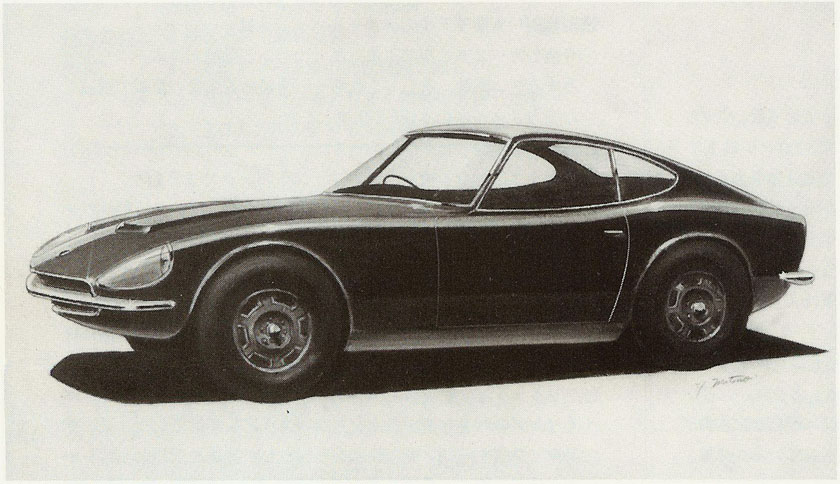
Above: 1965 A Concept Drawing For A Fastback Coupe. Mr. Matsuo tells us that he regularly drove the 1600/2000 roadsters for fun. He knew however that the next generation sports car had to provide more more comfort and offer a greater degree of practicality. Thus a fastback coupe was added to the styling alternatives.
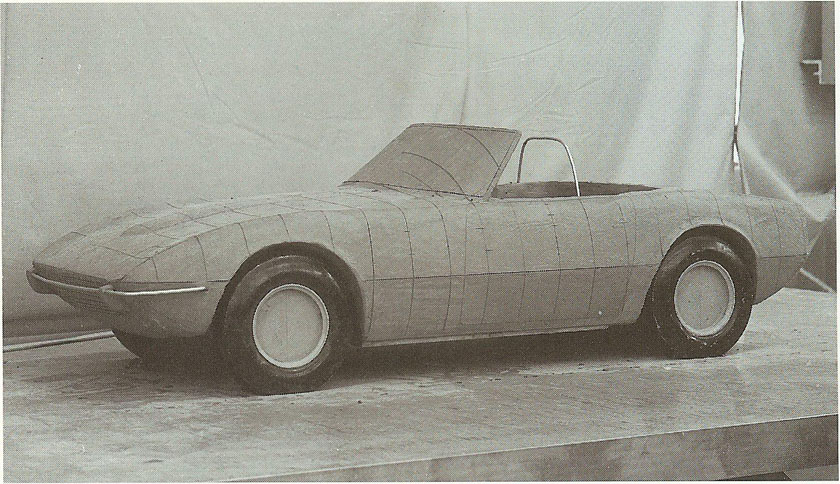
Above: 1965 First Quater Scale Clay Model, Sitting On A Table Prior To The Full Scale Clay Model of 1966.
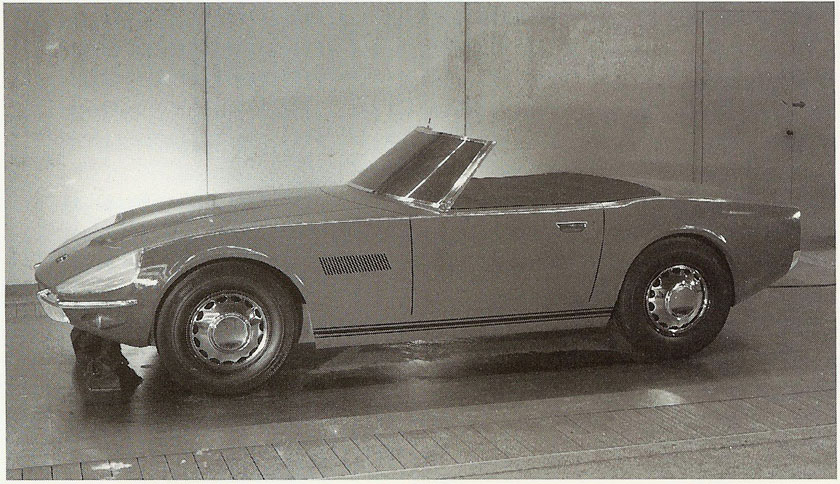
Above: 1966 Plan A - First Full Size Clay Model

Above: 1966 Removable Hardtop Tried. The hardtop was formed from expanded polystyrene and covered in film to appear as a vinyl top. Lightweight allowed it to be moved easily to alternative styling concepts.
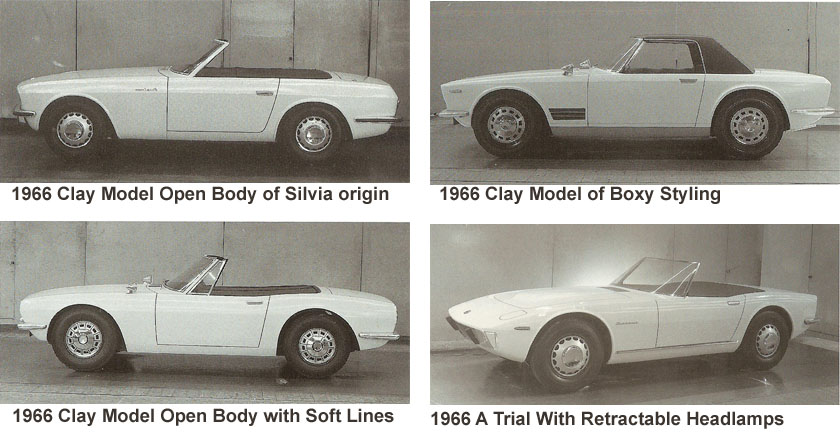
Above 1966 Plan B and Plan C Alternative Styling: While Mr. Matsuo continued to believe that his Plan A was the future, his Management wanted to see several styling alternatives presented and they encouraged the development of what Mr. Matsuo called Plan B. Looking at the Sports Car market in 1970 we can see that the Plan B styling was more in line with sports cars of the time ie. MG, Triumph, Fiat 850 & 124 and the more boxy styling of the VW/Porsche 914.
Mr Katayama had always said a closed coupe was perhaps the ideal compromise, so we started to look into the possibilities of a hatchback, which would enable us to combine aerodynamic styling with good luggage capacity. "

Above: Late 1966 Fastback Top Added To Plan A
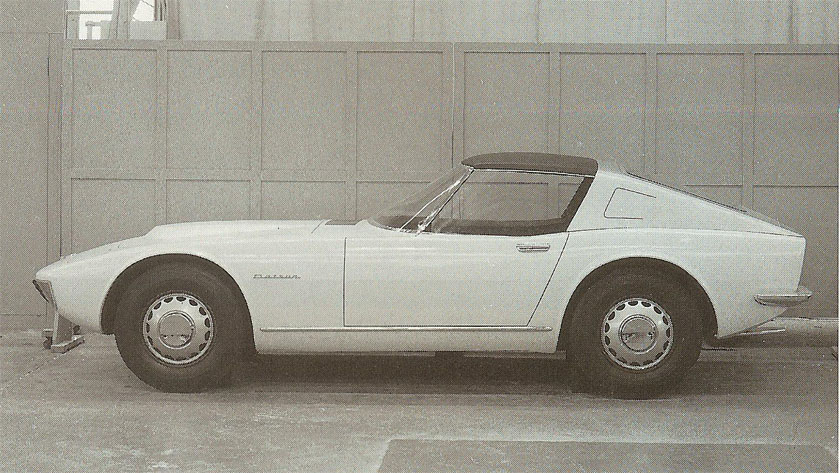
Above: Late 1966 Plan C - A Concept With Retractable Headlights Was Considered But Rejected.
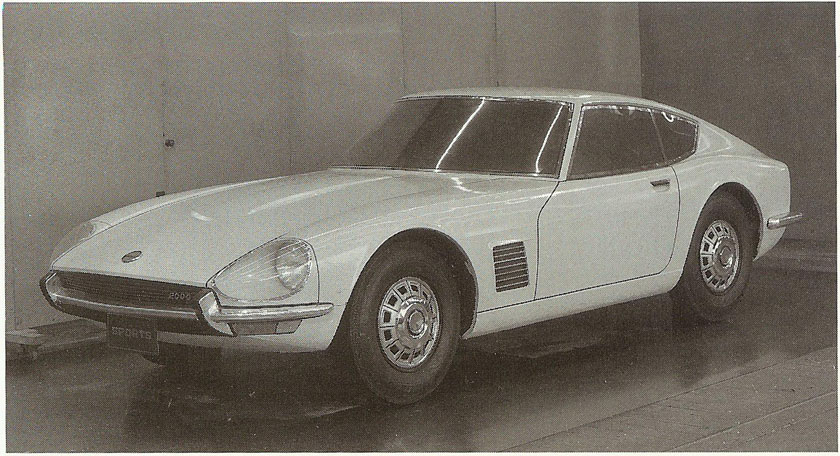
Above:1966 Plan A - The Full Size Clay Model of Hatchback Styling. Side air scoops would disappear as the styling was refined. 2000 in the grill reflects the U20 engine as at this point the car was still planed for a 4 cylinder engine.
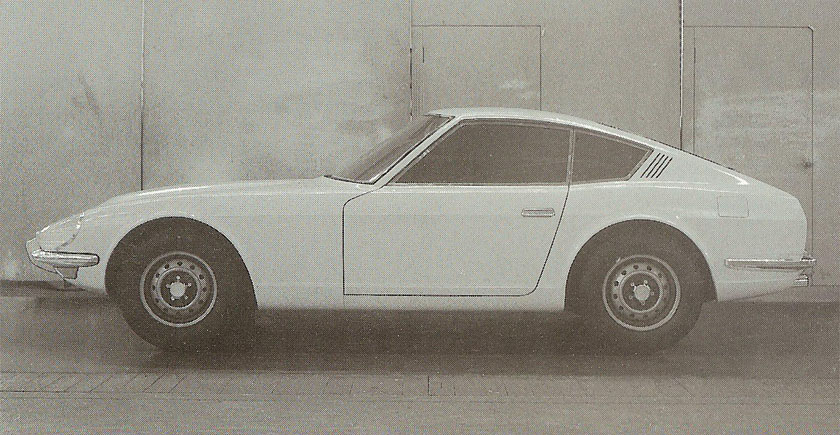
Mr Katayama had requested the 2.4 liter L24 power-plant, while the Japanese market had exorbitant taxes on vehicles over 2,000cc. Nissan had just taken over the Prince concern, and we were told to use their two-liter S20 twin-cam unit (this eventually became the famous Z432 model, incidentally). "
Mr. Yoshihiko Matsuo, Chief of Design, Sports Car Styling Studio #4
Production Engineering:
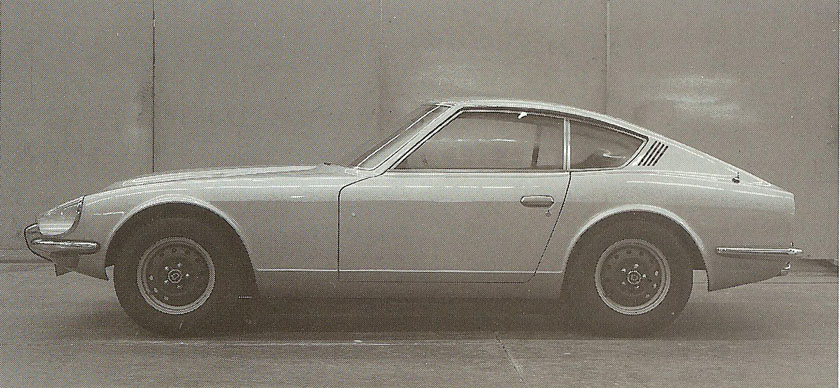
Above: 1967 The First Prototype, still a little narrow.
Mr. Matsuo writes; "With Mr Katayama's support, the project finally started to progress and the engineering department became involved. Eventually, by the early Autumn of 1967, we had produced a glassfibre prototype. It was allocated the 'Z' designation (an appellation that would stay with the car throughout its production life). However, when the technical staff arrived to discuss the project, we found a number of problems.
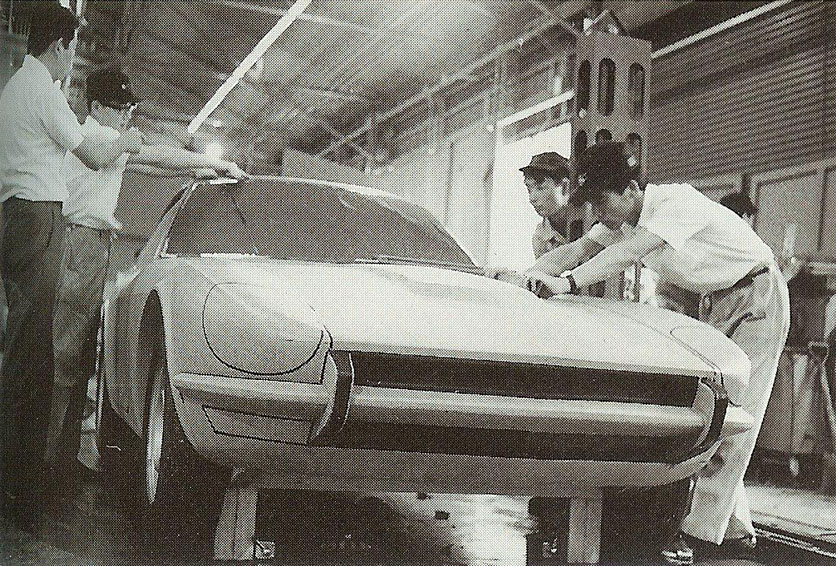
Above: 1967 End Of Autum A Final Clay Body now wider for the L24 with A/T and hood higher for L24 & S20 six cylinder engines. Wheel wells now larger for 4 wheel independent suspension specified by Engineering. {At this point the design cycle for Nissan's new L20A, a 2.0 liter, in-line 6 cylinder OHC based on the design of the earlier L13/L16 had not been completed.}

Mr. Matsuo writes: "When the time came to incorporate the necessary changes to the body width and so on, I was aided by Mr Tamura with the measurements, but it was very difficult to retain the proportions of the vehicle. Having solved all the detail problems, a clay model was presented towards the end of the Autumn. " Mr. Tamura finalized the form and detail styling of the fine lines of the body in the final clay.
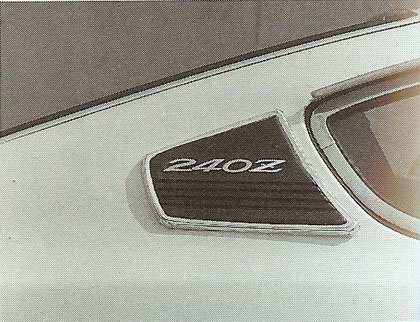
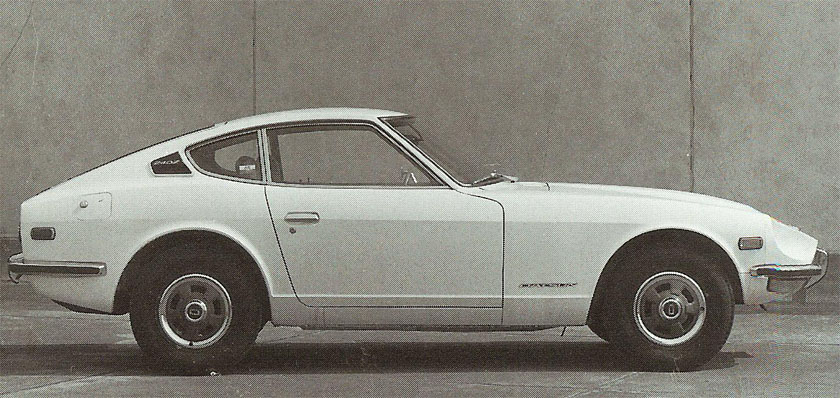
Above: 1968 The Final Prototype.
In 1968 the drawings were finalized and a last prototype was produced, using a plaster mold to get the shape for the glassfibre panels. Note the US MVSS requred side marker lights, the "D" hubcaps and "OK" inspection sticker in the rear quarter window.
The men responsible for the design and development of the Datsun 240Z, Nissan Fairlady Z-432 and Nissan Fairlady Z:
Mr. Yutaka Katayama, President Nissan Motors in U.S.A.
Mr. Teiichi Hara, Manager Nissan Design and Development
Mr. Kazumi Yotsumoto, Manager, Passenger Car Styling Section
Mr. Akio Yoshida, Assistant Designer (Exterior Design)
Mr. Tamura - Clay Modeler - Final Form / Detail Body Surface Styling
Mr. Sue Chiba (Interior Design)
Mr. Eiichi Oiwa and Mr. Kiichi Nishikawa (Styling Studio Assistants)
Mr. Hidemi Kamahara and Mr. Tsuneo Benitani, Design Engineers
(engineering everything under the skin).
Mr. Hitoshi Uemura, General Supervisor, #3 Vehicle Construction Plan Division
Mr. Hiroo Miyate, Vice Chief, Nissan Auto Body Construction Division
The Above Information Can Be Found In:
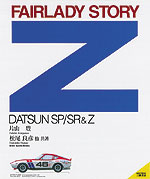
FAIRLADY Z STORY - DATSUN SP/SR & Z
By Yutaka Katayama and Yoshihika Matsuo
Miki Press
ISBN 4-89522-244-6
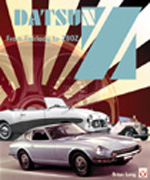
DATSUN Z FAIRLADY TO 280Z
By Brian Long
Veloce Publishing
ISBN 1-901295-02-8

PROJECT X Challengers 240Z The Fated Z Plan
By: Akira Yokoyama
Digital Manga Publishing
ISBN 1-56970-957-2
www.dmpbooks.com
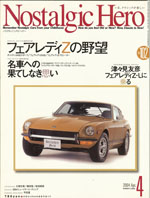
Nostalgic Hero
Vol 102, April 2004
www.geibunsha.co.jp